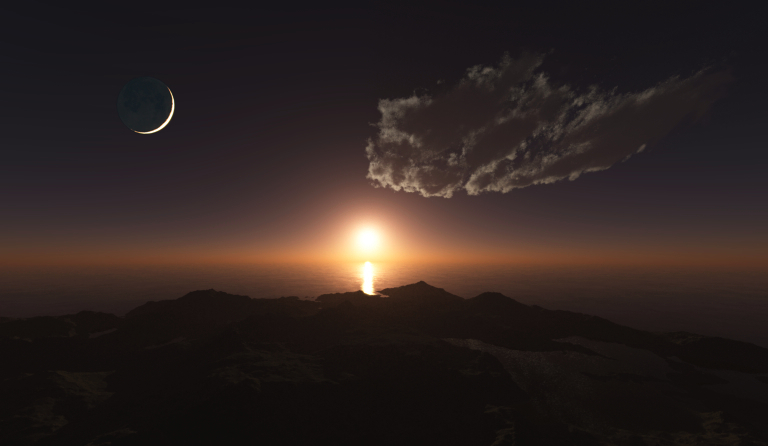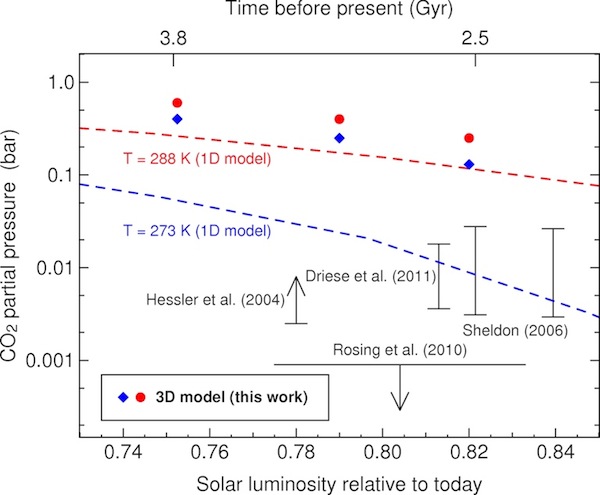
The landscape during the early Archean could have looked like this: small continents on a planet mostly covered by oceans, illuminated by the much fainter young Sun, and with a Moon that appears larger in the sky because of its smaller distance to Earth.
In one of the research activities within the PIK Flagship Project ACE - Ancient Climates on Earth, we are trying to understand why there was liquid water on the surface of Earth during the Archean eon (3.8 to 2.5 billion years ago) despite a 20-25% fainter Sun. We investigate this "faint young Sun paradox" using a three-dimensional climate model of intermediate complexity, improving on earlier modelling efforts mostly based one-dimensional models. In particular, we want to answer the following questions:
- What are the minimum concentrations of greenhouse gases such as carbon dioxide required to prevent the oceans from freezing over completely?
- How do the smaller continents and the higher rotation rate affect the Archean climate system?
- Which solutions to the faint young Sun problem are in agreement with emerging geochemical constraints for the atmospheric composition during the middle and late Archean?
Recently we have published the first results from three-dimensional climate model simulations for the early Archean, demonstrating that much higher carbon-dioxide concentrations are required than previously estimated from one-dimensional model experiments:

Atmospheric carbon-dioxide partial pressures required to prevent the early Earth from freezing (blue diamond) and to reach a global mean temperature similar to today (red circle) as compared to one-dimensional model results (blue and red dashed lines) and geochemical estimates (dark grey). Source: Kienert, Feulner & Petoukhov (2012)
Publications related to the faint young Sun problem
- Kienert H., Feulner G., Petoukhov V., 2013: Albedo and heat transport in 3-dimensional model simulations of the early Archean climate, Climate of the Past, 9 (Issue 4, 7 August 2013), 1841-1862. doi:10.5194/cp-9-1841-2013
- Kienert H., Feulner G., Petoukhov, V., 2012: Faint young Sun problem more severe due to ice-albedo feedback and higher rotation rate of the early Earth, Geophysical Research Letters, 39 (Issue 23, 15 December 2012), L23710. doi:10.1029/2012GL054381
Highlighted in: Geophysical Research Letters, Eos
- Feulner G., 2012: The faint young Sun problem, Reviews of Geophysics, 50 (Issue 2, 25 May 2012), RG2006. doi:10.1029/2011RG000375





